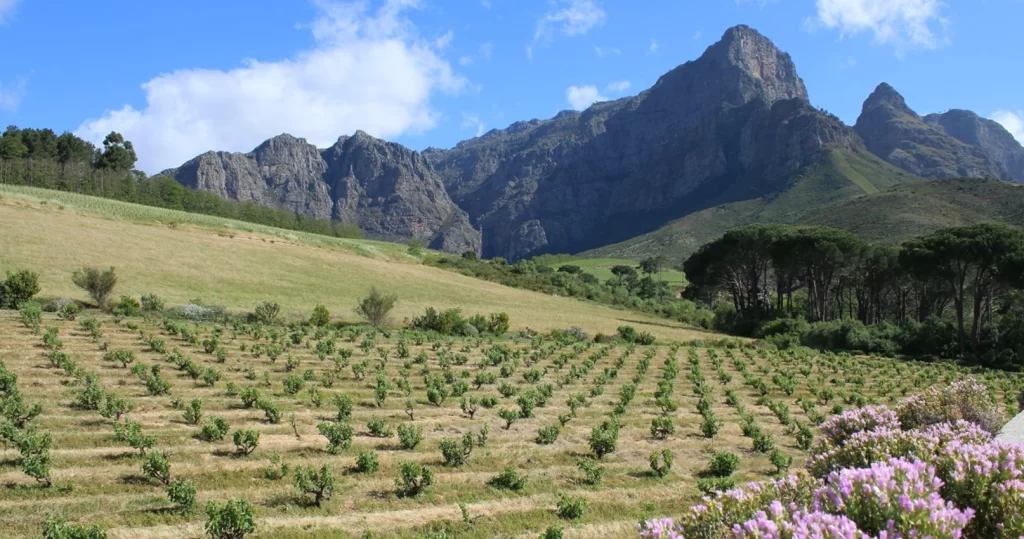Read the origional article here.
Looming out from my computer screen is an aroma wheel. It’s big and comprehensive. Think of any fruit you like, from grapefruit and guava to watermelon and fig, and it’s there. Spices, too, starting with cloves and white pepper. Plus some sensations you’d probably never expect in wine, such as custard or straw.
Yet all these 60-plus aromas are found in a single grape variety, from a single country. The grape is chenin blanc, the place South Africa.
There’s history here. Vines have been planted in South Africa since the mid-17th century, and the oldest survivors are more than 120 years old. Chenin is a youngster among these, from the 1940s, but it is by far the most prevalent variety in this wonderful living legacy of old vines. Not long ago most were threatened with extinction, but now wise growers rightly nurture them.

“Old vines make wines that reflect the earth and the terroir they grow in,” argues Rosa Kruger, founder of the Old Vine Project. “They are a monument to the farmer’s love of his or her land.”
The project aims, she says, “to focus the minds of winegrowers, winemakers and all wine drinkers on the benefits that come with age in vines”. Helping to do so is the introduction of the OVP Certified Heritage Vineyards seal; to carry it, wines must come from vines at least 35 years old.
Over recent weeks, I’ve enjoyed some fine examples of South African chenin, both from old vines and younger ones whose growers’ practices are so different from the days when demand dictated massive production and mediocre results.
Seal-bearing Bellingham The Bernard Series (£11, Tesco and independents) is splendidly aromatic and combines tropical fruit character with appealing freshness – it’s excellent value; Fryer’s Cove (£14.30, bcfw.co.uk) shows its close-to-the-Atlantic origin in salty minerality tempering lemon and peach flavour, with well-integrated oak; in Kleine Zalze Vineyard Selection (£14, www.winedirect.co.uk) the oak is a little more obvious, giving the wine extra polish.


